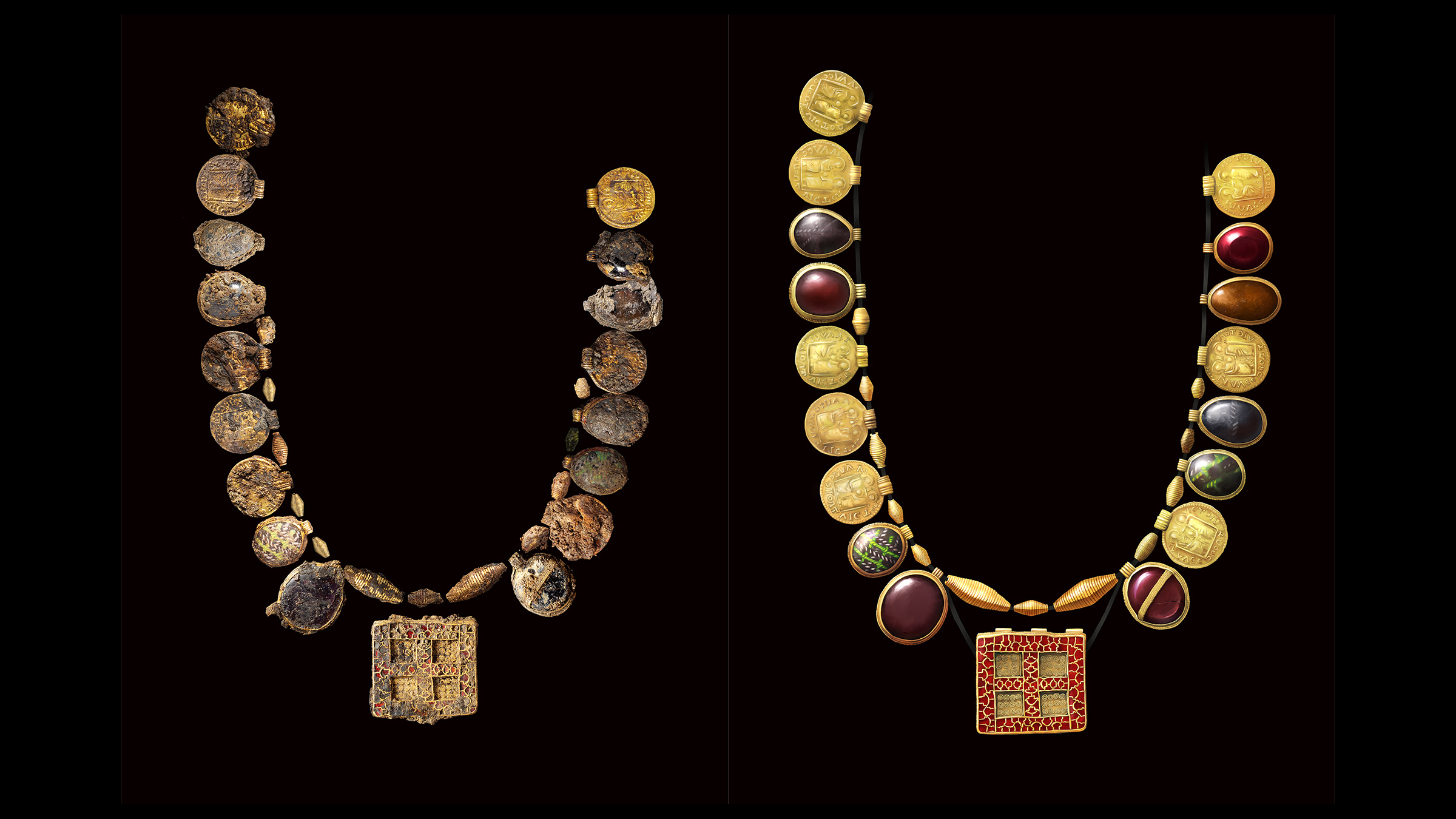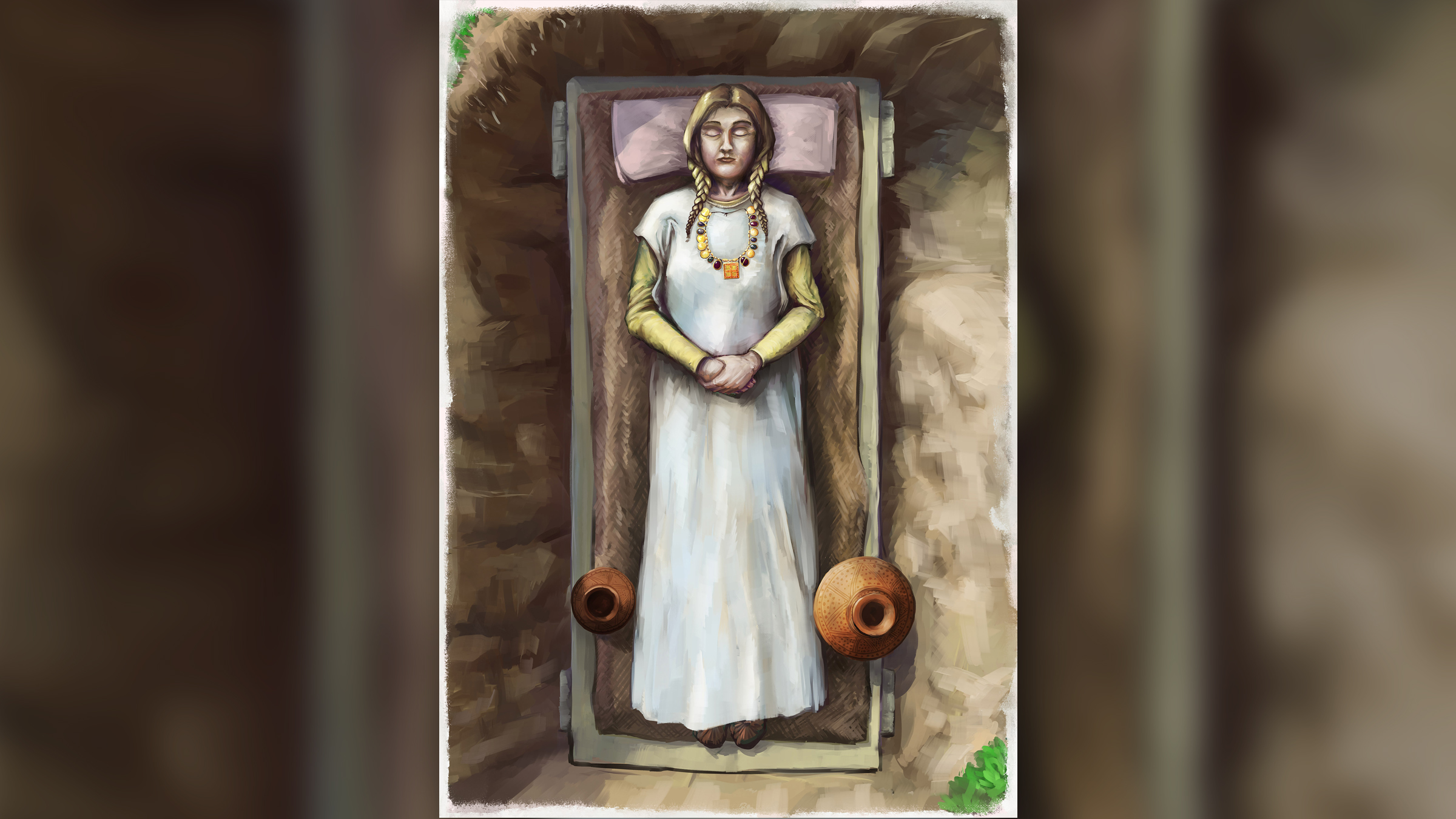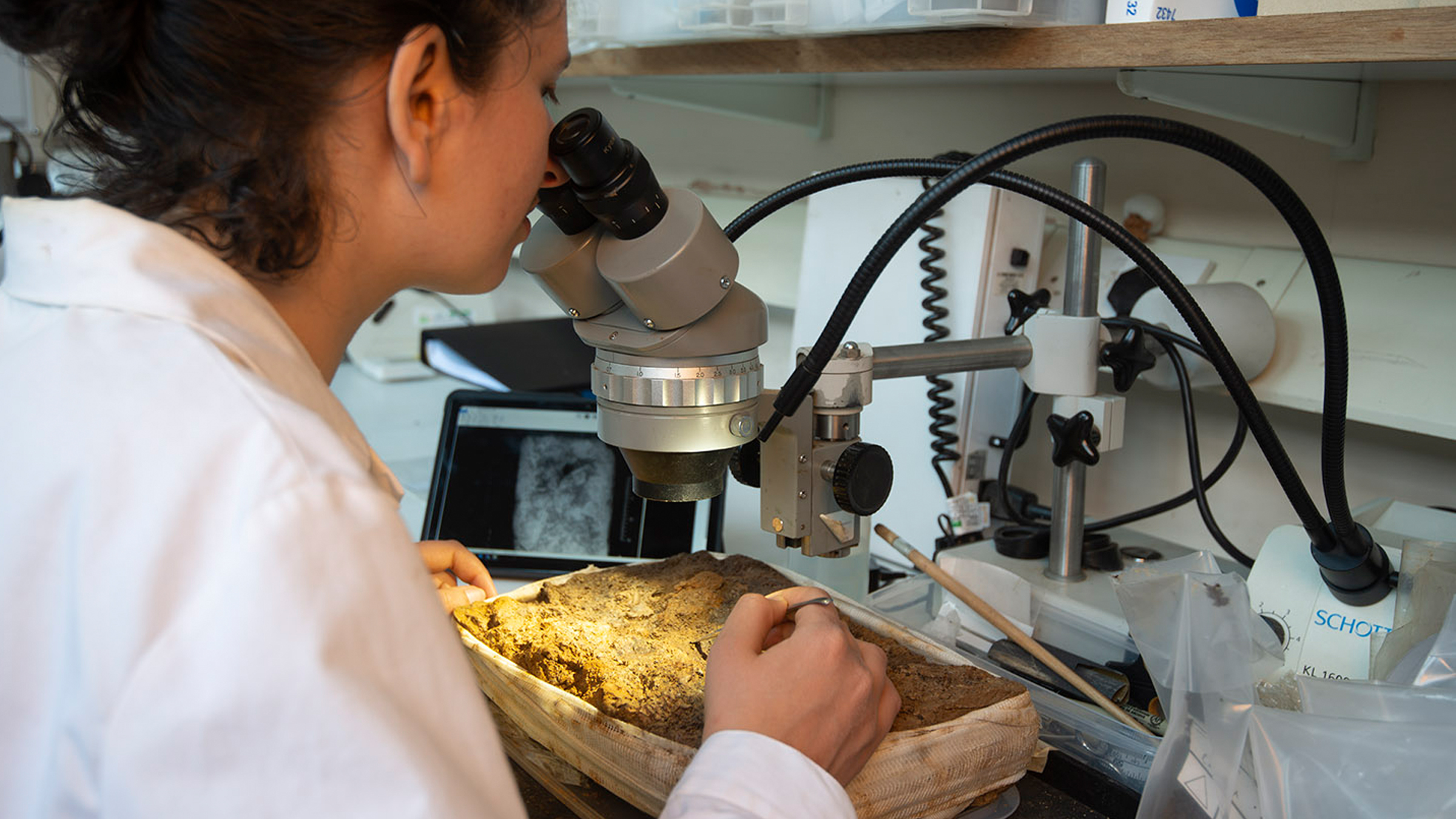Gold-and-garnet cross necklace found buried with wealthy medieval British woman
Archaeologists in England were surprised to discover an elaborate cross with human faces and a gold-and-garnet necklace in an early medieval burial.

Archaeologists in England have unearthed medieval bling — an elaborate silver cross with human faces and a necklace made of gold with semiprecious gems and Roman coin pendants — in the grave of what might be an early female Christian leader, such as an abbess or potentially even royalty.
The team made the discovery during the groundbreaking for a housing development in Northamptonshire, England. Dating to A.D. 630 to A.D. 670, the items appear to be part of a medieval burial for an elite woman.
The necklace has been cleaned up and reconstructed by Museum of London Archaeology (MOLA) conservators. Thirty different pendants and beads give the jewelry an astonishingly modern look, and its centerpiece is a cross made out of garnets inset in gold. The large, rectangular pendant, however, seems to have been originally part of a hinged clasp and then reused, according to MOLA specialists.
Related: 6,500 medieval coins and rare gold rings unearthed in Polish cornfield

The finds have been called the "Harpole Treasure" after the parish in which they were found, and the burial is significant for being a medieval high-status female grave. "We didn't quite realize how special this was going to be," MOLA site supervisor Levente-Bence Balázs said in a statement. Nothing approaching the ornateness of the Harpole necklace has ever been found in early medieval England, the MOLA team said.
In addition to the necklace, the burial contained two decorated pots, a shallow copper dish and a cross adorned with human faces made of silver. Because of the presence of two impressive crosses, MOLA researchers speculated that the woman who owned them may have played a role in the early Christian church.

Little else survives of the burial. A few fragments of tooth enamel are all that remain of the woman's skeleton, but planned work by MOLA specialists includes residue analysis that could provide clues about how the decorated pots were used. Another burial was found nearby, but it has not been dated and did not include high-status artifacts. Archaeologists do not expect to find anything else at the site.
Sign up for the Live Science daily newsletter now
Get the world’s most fascinating discoveries delivered straight to your inbox.
"This find is truly a once-in-a-lifetime discovery," Simon Mortimer, an archaeology consultant at RPS, a firm that manages development projects, said in a statement.
The Harpole Treasure is subject to the U.K. Treasure Act, a 1996 law that requires people to report finds of valuable historical objects within two weeks of discovery. Finders are often required to donate the treasure to a museum, but they are usually eligible for a reward under this act. Daniel Oliver, the regional technical director of Vistry West Midlands, a housing development group, said in a statement that he "couldn't be more excited to see how much more has been learned already" about the burial and jewelry.
"This is an exciting find which will shed considerable light on the significance of Northamptonshire in the Saxon period," Liz Mordue, archaeological adviser for West Northamptonshire Council, said in a statement. "It also serves as a reminder of the importance of archaeology in the planning and development process."

Kristina Killgrove is a staff writer at Live Science with a focus on archaeology and paleoanthropology news. Her articles have also appeared in venues such as Forbes, Smithsonian, and Mental Floss. Killgrove holds postgraduate degrees in anthropology and classical archaeology and was formerly a university professor and researcher. She has received awards from the Society for American Archaeology and the American Anthropological Association for her science writing.









